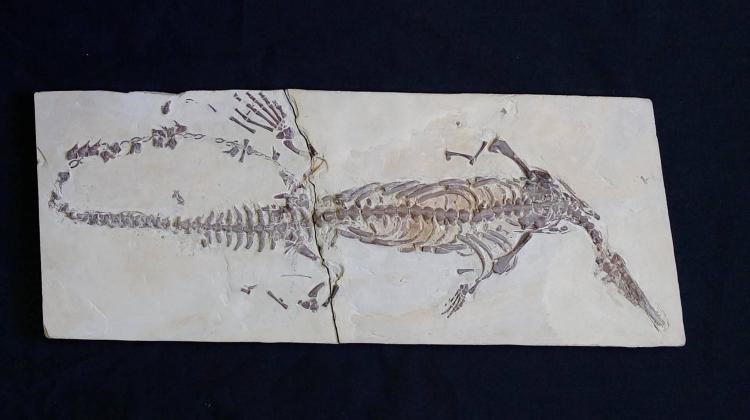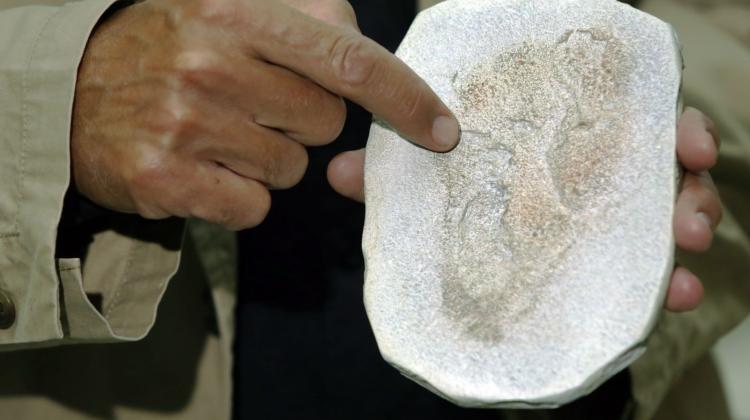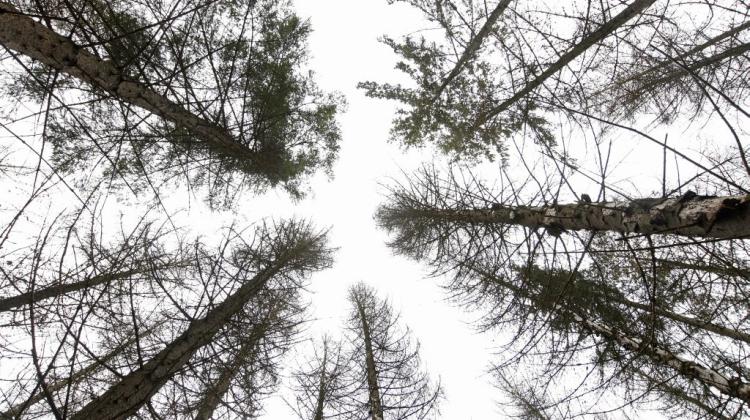The oldest case of scoliosis in fossil vertebrate
 Source: Dawid Surmik, Tomasz Szczygielski
Source: Dawid Surmik, Tomasz Szczygielski
In amniotes, vertebrae develop from paired, symmetrical primordia. Hemivertebra is a congenital developmental malformation caused by unequal development of the left and right half of a vertebral centrum or complete absence of either of them, resulting in asymmetry of the vertebra. The normally developed half of the centrum wedges between surrounding vertebra, causing lateral bending of the spine. The oldest case of this pathology was recently described by Polish-American team of researchers.
A nearly complete skeleton of Permian marine reptile was studied by Agnieszka Kapuścińska (now employee of the Institute of Paleobiology, Polish Academy of Sciences in Warsaw, Poland) in 1999 as part of her Master’s Thesis. The specimen, found in Brazil and initially identified as Mesosaurus brasiliensis, was bought from a private collectioner. During her research, Kapuścińska recognized it as Stereosternum tumidum and dated to early Permian, approx. 290 million years. In the description, she noticed a pathology in the middle section of the vertebral column, but the diagnosis had to wait – the specimen was deposited in the collection of the Institute of Paleobiology, Polish Academy of Sciences, for another 17 years. At the end of 2016, she told Dawid Surmik (Park of Science and Human Evolution, Delta PaleoSafari Foundation) and Tomasz Szczygielski (Institute of Paleobiology, PAS), both interested in skeletal pathologies of fossil vertebrates, about her observations. The scientists recognized a hemivertebra-caused scoliosis. Their diagnosis was validated by a well-known researcher of fossil pathologies, and coauthor of the study, Bruce Rothschild from Carnegie Museum in Pittsburgh (USA).
Although hemivertebrae were already known from the fossil record, this specimen is specially interesting for several reasons. Firstly, it is a complete skeleton, while most of the previously described cases were known from individual, coosified vertebrae. Secondly, it is early Permian in age, which makes it the oldest example of scoliosis in the world. Thirdly, Stereosternum was a swimming reptile, so the lateral bending and correlated stiffening of the spinal column could potentially severely handicap its hunting and escape ability, and that should result in its young death. The skeleton, however, belonged to adult individual. This means that the stiffness of the middle section of the vertebral column did not severely impeded its locomotion, so Stereosternum did not use lateral undulation of the trunk for underwater swimming, but mainly the tail. Notably, the described specimen is the only known example of such deformity in aquatic tetrapod.
Hemivertebra is a rare malformation, which happens approximately in three of 10000 individuals in human population. –– The probability of finding a complete specimen of a 290 million years old marine reptile with such well-exhibited pathology is exceptionally small, if we keep in mind that only a miniscule fraction of a population ever has any chance of preservation in the fossil record – say the researchers.
The results of their study were published in an American open-access scientific journal PLOS One on September, 21st 2017.
Publication:
▪ Szczygielski T, Surmik D, Kapuścińska A, Rothschild BM (2017) The oldest record of aquatic amniote congenital scoliosis. PLoS ONE 12(9): e0185338. https://doi.org/10.1371/journal.pone.0185338
kap/
Przed dodaniem komentarza prosimy o zapoznanie z Regulaminem forum serwisu Nauka w Polsce.


















